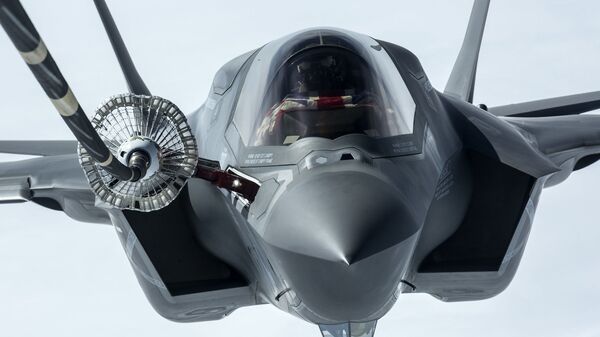Lockheed Martin’s F-35 Lightning II stealth aircraft is basically a giant, flying computer, and its greatest asset, according to Air Force strategists, is funneling huge amounts of information through that computer to and from the battlefield.
However, keeping the software on that computer up to date has proven challenging, and the F-35 program has fallen behind in scheduled updates, according to the annual report from the Department of Defense’s Office of the Director of Operational Test & Evaluation (DOT&E), released on January 30.
Software Updates Behind Schedule
Computer updates have proven a continuous problem for the F-35, which first flew in 2006 and the predecessor of which, the X-35, dates to 2000. The 15 or 20 years of its development have coincided with such huge advances in computing technology that by the time the airplane was joining air forces in 2015, its systems were already obsolete.
In 2018, the Pentagon adopted a new program to help speed the improvement process along, called Continuous Capability Development and Delivery, which replaced larger annual updates with a rolling schedule of smaller updates, Defense News explained.
It’s this schedule that has fallen behind, according to Robert Behler, head of DOT&E.
“The current Continuous Capability Development and Delivery (C2D2) process has not been able to keep pace with adding new increments of capability as planned,” Behler wrote in the report. “Software changes, intended to introduce new capabilities or fix deficiencies, often introduced stability problems and adversely affected other functionality.”
“Due to these inefficiencies, along with a large amount of planned new capabilities, DOT&E considers the program’s current Revision 13 master schedule to be high risk,” Behler said, noting the schedule was barely keeping pace with the discovery of new deficiencies.
“Although the program is working to fix deficiencies, new discoveries are still being made, resulting in only a minor decrease in the overall number of deficiencies,” he wrote. “There are many significant deficiencies that should be addressed to ensure the SDD [System Development and Demonstration] baseline configuration is stable prior to introducing the large number of new capabilities planned in Block 4.”
An Inefficient Computer System
The report also found continuing fault with the Autonomic Logistics Information System (ALIS), what Lockheed describes as the plane’s “IT backbone,” handling some 65 tasks that range from mission planning to sensor processing and even sending automatic maintenance requests.
“ALIS remains inefficient and cumbersome to use, still requires the use of numerous workarounds, retains problems with data accuracy and integrity, and requires excessive time from support personnel,” the report stated. “As a result, it does not efficiently enable sortie generation and aircraft availability as intended. Users continue to lack confidence in ALIS functionality and stability.”
In many ways, ALIS is the core of the F-35, since the plane’s wide suite of sensors vacuums up a colossal amount of electromagnetic information above the battlefield, providing unparalleled volume of information to war planners back at base.
As an example of the utility of this information: back in November 2019, a drill at the Doña Ana Range in New Mexico saw an M109A6 Paladin mobile artillery system destroy a simulated air defense battery using targeting information provided by the F-35’s computer.
However, as Sputnik previously reported, ALIS is on its way out, to be replaced by the cloud-based Operational Data Integrated Network (ODIN) in the next few years. The DOT&E report notes that planned ALIS updates in late 2019 and early 2020 have been delayed, and “the program has not released an updated schedule showing the decomposition of the planned ALIS 3.6/3.7 requirements, deficiency fixes, and the associated test and fielding plan.”
Ongoing Cybersecurity Failures
“For example, ALIS 3.6 was to include migration to Windows 10 and cybersecurity improvements, including fixes to cybersecurity deficiencies. DOT&E is not aware of how the program will incorporate these changes to support the many fielded systems,” Behler noted in the report.
“The program’s decision to not release ALIS 3.6 and 3.7, while not yet providing a road map to fielding of the capabilities and fixes previously planned for those releases, increases timeline uncertainty and schedule risk for corrections to ALIS deficiencies, particularly those associated with cybersecurity and deploying Windows 10,” the report notes. “The program should develop plans to deliver the remaining planned SDD capabilities and necessary deficiency fixes.”
The report further notes that cybersecurity issues discovered “during earlier testing periods have not been remedied.”
One of the more embarrassing issues discovered was just how easy it was to break the F-35’s system password, with one Pentagon hacker getting through in just nine seconds, according to a Government Accountability Office report in October 2018. A subsequent report by the DoD Inspector General’s office the following January noted the issue had still not been fixed, and another in June 2019 noted “critical vulnerabilities” across the board at the Pentagon.



